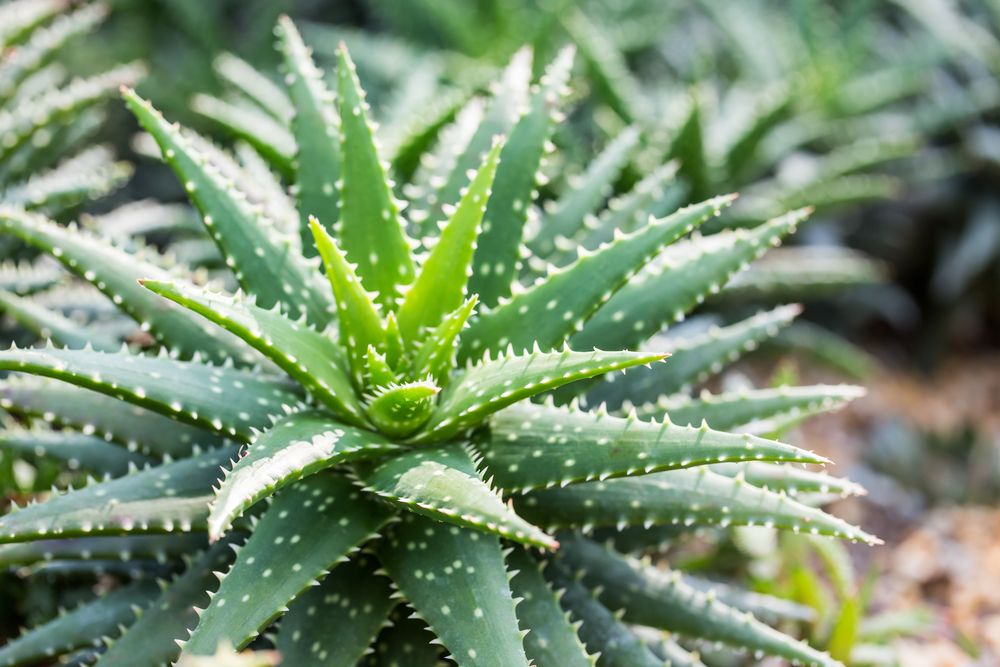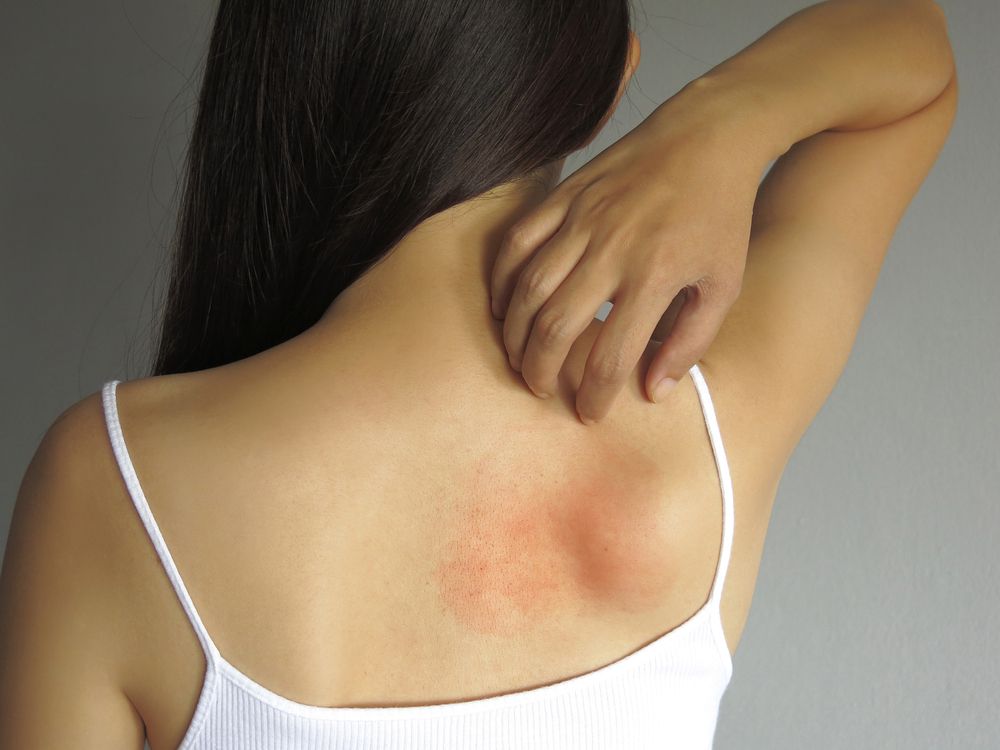A rash is a broad medical term used to describe widespread skin lesions. Considering rashes come in many forms, they also have various causes — most of which are viral, bacterial, or an adverse reaction to stimuli, such as stress, allergies, or medications. (Learn More, All About Rashes)
In most cases, rashes can be treated with various home remedies, such as ice packs, oatmeal baths, or creams with aloe vera or coconut oil. (Learn More, Home Remedies for Rashes)
If the rash spreads to other areas, becomes painful, or symptoms increase, you should see a doctor. An online doctor who provides consultations through telemedicine services may be able to provide a diagnosis and prescription for further treatment. (Learn More, Other Home Remedies)
All About Rashes
According to Medical News Today, a rash is a “widespread eruption of skin lesions.”.
Different conditions cause different kinds of rashes, and the rashes themselves can vary greatly in appearance, duration, and physical sensation. The nature of these differences is essential in diagnosing what caused the rash and how to treat it.
A rash can affect just one small area, or it can cover an entire region of skin. In some cases, it can be widespread, covering most or all of the body.
Rashes can be dry, moist, bumpy, smooth, cracked, or blistered. Some patients experience painful, itchy rashes, while others may not feel anything at all. Rashes can even change color as the underlying condition progresses.
In some cases, rashes will require no treatment and resolve on their own, or be manageable through home treatment. However, if a rash becomes more serious, medical attention may be necessary.
Taking Care of a Rash
Rashes can be caused by the following issues:
- Allergies
- Diseases
- Reactions to stimuli, such as stress
- Medications
- Infections (bacterial, viral, fungal, or parasitic)
Treatment will differ depending on the cause of the rash, but some basic home tips can ease the discomfort.
- When bathing or showering, replace scented soaps with mild versions. Soaps for babies or products designed for sensitive skin are adequate replacements. Similarly, don’t use any cologne, perfume, or deodorant near the rash.
- Wash with warm water, not hot.
- Don’t cover the rash with a bandage. Instead, let the rash breathe.
- Even if the rash itches, do not scratch or rub the skin. Gently pat the area, or let your hand rest lightly on the rash until the itching sensation passes.
- If your rash is dry (due to eczema, for instance), use unscented moisturizers.
- Cortisone creams can ease the discomfort.
Check with your doctor before using any home treatments. An online doctor may be able to offer a visual diagnosis through a secure telemedicine system.
Home Remedies for Rashes
A painful rash might respond positively to over-the-counter painkillers, like acetaminophen or ibuprofen, but pain is also a sign that something is wrong. The painkillers may ease pain-related symptoms, but it is vital to consult a doctor to find the root of the rash and proper treatment.
While most home remedies will relieve symptoms, the American Academy of Dermatology recommends visiting a doctor in the presence of pain or pus discharges, or if an animal or insect bit you before the rash appeared. Medical attention will also be necessary if the rash spreads to other areas of your skin and body.
Additionally, if you experience skin color changes, difficulty breathing, fever, trouble thinking, difficulty maintaining your balance, swelling, vomiting, or diarrhea, you should go to a doctor or call 911.
If leaving the house is not an option, a doctor can do an online examination via a secure telemedicine service.
In most cases, however, a rash will pass with some basic medical treatment (typically a short course of antibiotics) or safe and effective home remedies.
Cold Compress
A cold compress is one of the quickest and easiest ways to relieve the pain and itching of a rash. Cold water — in the form of cold compresses, cool showers, or damp cloths — can offer immediate relief to a rash, slow down its spread, and stop swelling by constricting blood flow to an inflamed area.
To make a cold compress or ice pack from home, simply fill up an ice bag or plastic bag with ice from your freezer, or soak a cloth in cold water. Then, place the bag or cloth over your skin. Do not place the ice directly on your skin. Keep the bag or cloth on your skin until the itching or the pain fades. Repeat as needed, but make sure to stop if you feel your skin going numb.
If your rash is large or spread out over much of your body, a cool bath or shower can offer similar relief.
Oatmeal Baths
Oats have been used for medicinal purposes for centuries. Today, colloidal oatmeal — not the oatmeal used for breakfast — is available in various forms, including shampoos, gels, and creams. One of the most common (and most straightforward) home remedies to treat skin irritation is an oatmeal bath.
In 2003, the Food and Drug Administration approved the use of oatmeal as a skin protectant. Now, many colloidal oatmeal skin treatments are available over-the-counter in ready-to-use packets.
Colloidal oatmeal dissolved in a bath is often used to relieve itchiness from a rash. Whole, uncooked oats can be found in grocery or health food stores and finely ground in a food processor. After adding one cup of the powder to bathwater, immerse yourself for 30 minutes and then wash off with a lukewarm shower.
While this home remedy dates back to ancient times, recent scientific studies have supported the effectiveness of oatmeal as an anti-inflammatory agent to relieve dryness, roughness, and itchiness around the skin. The oils in the oats (oleic acid, linoleic oil, and avenanthramides) reduce the proteins in skin cells that trigger inflammation.
Colloidal oatmeal creams can also strengthen the skin and prevent a rash from spreading.
Aloe Vera
The aloe vera plant has long been a popular aid to health and skincare. Not only can it heal wounds, but it also has anti-inflammatory, antiviral, antioxidant, and antimicrobial properties.
 Aloe contains four different vitamins (A, B-12, C, and E), as well as calcium, magnesium, essential fatty acids, and zinc. It also has enzymes, carbohydrates, and sterols — all of which help to reduce inflammation.
Aloe contains four different vitamins (A, B-12, C, and E), as well as calcium, magnesium, essential fatty acids, and zinc. It also has enzymes, carbohydrates, and sterols — all of which help to reduce inflammation.
Clear aloe vera gel can be applied to itchy and irritated skin. Make sure to wash and dry the affected area to maximize the amount of gel that gets absorbed. Applying aloe twice a day is typical, but doctors may recommend using it more often, depending on severity. Some people are allergic to aloe vera, so check with your doctor before using this remedy.
Fresh aloe gel found in the plant’s leaves tends to work better than the commercial aloe preparations found in a drugstore.
Coconut Oil
Taken from the meat and milk of coconuts, coconut oil has been used for centuries as a skin moisturizer because of its richness in saturated fats.
Coconut oil has antiseptic and anti-inflammatory properties, making e it an effective home remedy to treat a rash.
People with coconut allergies may still be able to use coconut oil. However, it is imperative to perform a test on a small, unaffected area of skin. If there is no reaction within 24 hours, the oil should be safe to use on your rash. If you notice any irritation, consult your doctor before continuing home-treatment.
Coconut oil is safe to use all over the body, regardless of rash location. Unprocessed (or virgin) oil retains most of the antimicrobial and antioxidant properties, making it the optimal choice for rash healing.
Coconut oil’s fatty acids have a wide range of healing properties, including antibacterial, antiviral, and anti-inflammatory compounds. Fifty percent of the fat content of coconut oil is composed of a pure antibacterial monoglyceride.
A 2004 study published in the Dermatitis journal found that both virgin coconut oil and mineral oil improve skin hydration in people who have dry and scratchy skin, whether or not it is the result of a rash.
Other Home Remedies
Other home remedies to treat rashes include:
While these home remedies have been known to relieve symptoms, checking with a doctor before self-treating at home is vital.
If visiting a doctor’s office is not possible, online doctors are accessible through telemedicine programs and can provide more information on the root of the rash and possible treatment methods.
References
What Is Causing My Rash? (November 2018). Medical News Today.
Rashes FAQ: 5 Commonly Asked Questions. (February 2015). Healthline.
How to Tell if a Rash Needs Medical Attention. (August 2015). American Academy of Dermatology.
Home Remedies to Stop an Itchy Rash. LIVESTRONG.
How to Make Your Own Oatmeal Bath. (August 2019). Verywell Family.
Anti-Inflammatory and Skin Barrier Repair Effects of Topical Application of Some Plant Oils. (January 2018). International Journal of Molecular Sciences.
Colloidal Oatmeal (Avena Sativa) Improves Skin Barrier Through Multi-Therapy Activity. (June 2016). Journal of Drugs in Dermatology.
Can Aloe Vera Gel Help Treat Eczema? (October 2018). Medical News Today.
Is Coconut Oil Good for Your Skin? (April 2017). Healthline.
A Randomized Double-Blind Controlled Trial Comparing Extra Virgin Coconut Oil With Mineral Oil as a Moisturizer for Mild to Moderate Xerosis. (September 2004). Dermatitis.
Melaleuca Alternifolia (Tea Tree) Oil: A Review of Antimicrobial and Other Medicinal Properties. (January 2006). Clinical Microbiology Reviews.
What Are the Benefits of a Baking Soda Bath, How Do You Take One, and Is It Safe? (November 2017). Healthline.
Comparison of Refined and Crude Indigo Naturalis Ointment in Treating Psoriasis: Randomized, Observer-Blind, Controlled, Intrapatient Trial. (March 2012). JAMA Dermatology.
Antimicrobial Activity of Apple Cider Vinegar Against Escherichia coli, Staphylococcus aureus and Candida Albicans; Downregulating Cytokine and Microbial Protein Expression. (2018). Scientific Reports.
Climatotherapy At The Dead Sea: An Effective Treatment Modality For Atopic Dermatitis With Significant Positive Impact On Quality Of Life. (Mar-Apr 2012). Dermatitis.
Alternative, Complementary, and Forgotten Remedies for Atopic Dermatitis. (July 2015). Evidence-based Complementary and Alternative Medicine.


